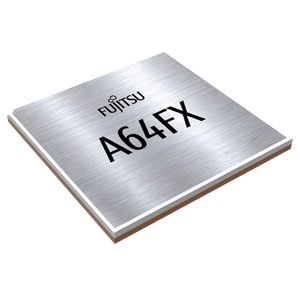 This video from Coreteks provides an overview of the Fujitsu A64FX processor that will power the pending Fugaku supercomputer in Japan.
This video from Coreteks provides an overview of the Fujitsu A64FX processor that will power the pending Fugaku supercomputer in Japan.
The A64FX is a many core CPU like AMD Epyc or Intel’s Xeons, but at the same time it behaves like a GPU in some workloads matching NVIDIA’s most powerful offering, Volta. Not only is this chip both a CPU and a GPU, it’s also considerably more power efficient than any competing products. The A64fx poses a lot of questions for the semiconductor industry. While heterogeneous systems are all the rage and hype around new packaging and things like 3D stacking are getting all of us excited, the A64FX features a somewhat traditional monolithic design. While Intel is focusing their efforts into a unified API around x86 and AMD is pushing open standards within the same instruction set, the A64FX is based on Arm, making use of its SV vector extensions. Today we’ll look at how this chip operates, why it could challenge Intel, AMD, NVIDIA and cloud and hyperscalers and what it could mean for us PC enthusiasts.
A64fx has demonstrated up to 8 times the performance of mainstream “Platinum” server processors for HPC workloads, and this game-changing performance has been realized through extensive co-design process involving the entire Japanese HPC community resulting in a highly HPC-optimzed CPU architecture. Fugaku also will likely to be the premier big data and AI/ML infrastructure; currently, we are conducting research to scale deep learning to more than 100,000 nodes on Fugaku, where we expect to obtain near top GPU-class performance on each node.
At SC19, Cray and Fujitsu announced a partnership to offer high performance technologies for the exascale era. Under the alliance agreement, Cray is developing the first-ever commercial supercomputer powered by the Fujitsu A64FX Arm-based processor with high-bandwidth memory and supported on the proven Cray CS500 supercomputer architecture and programming environment.



